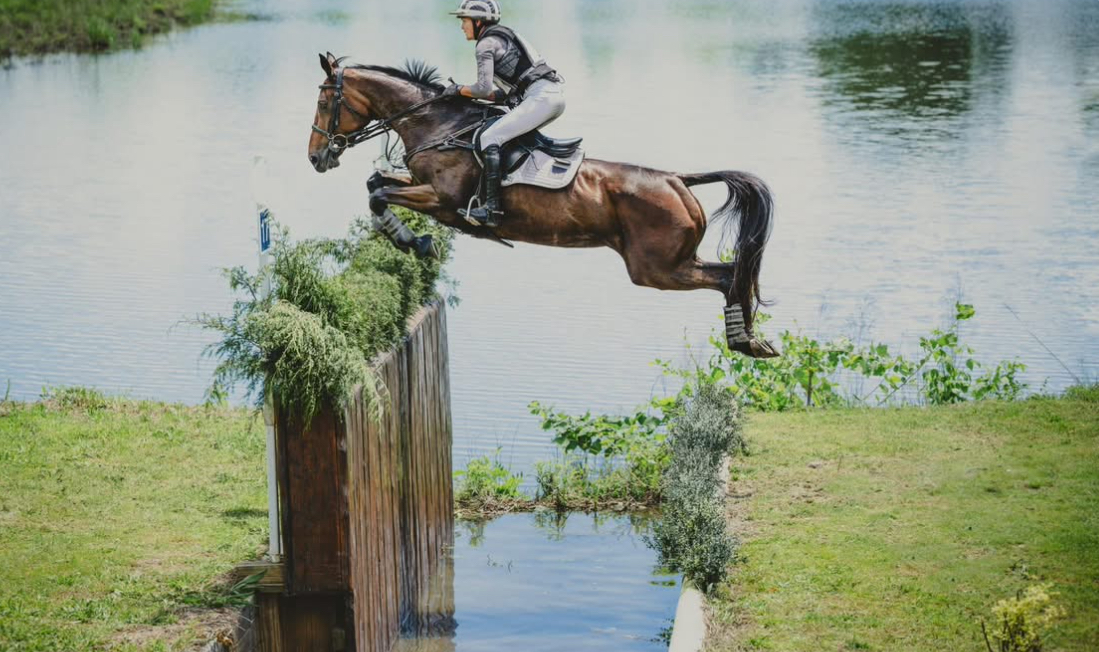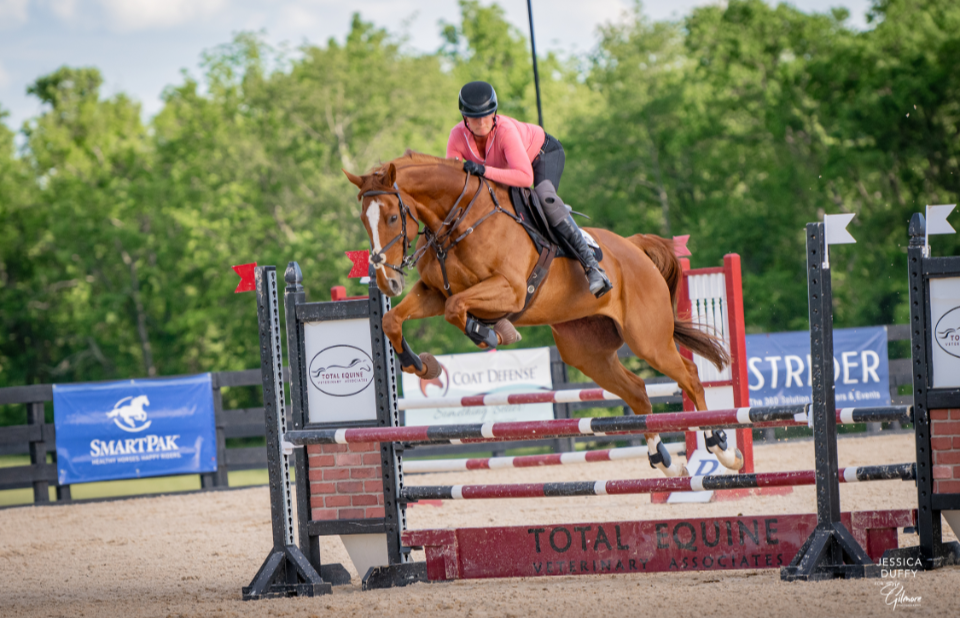
Our quest for the ultimate blogger continues. Contestant Chesna Klimek has survived the cliffs of insanity and the ROUS’s in the fireswamp to find herself responding to the same prompt of “Write about money in eventing.” Here is her entry; please rip her to shreds rate nicely in the poll following the essay.
Local Eventer Seen Panhandling, Cardboard Sign Reads “Know Horses, No Money”
Just browse the latest equestrian catalogues and the truth is written on the T-shirts…
“I used to have money, now I have a horse”
“I show, therefore I spend”
“Horses, the best way to turn money into manure”
No matter how many layers of psychological denial you have in place, we all know that horse ownership and 3DE is an outrageously expensive pursuit. However, it’s also a lifestyle decision that arguably keeps most of sane (you think I’m bad without coffee? Try me without horses!). I did some research, budgeting, and yes, even math, and let’s just say that somewhere your credit card is crying. In 2006 Denny Emerson calculated costs and reported that, “it’s pretty likely that one season of non-recognized eventing will cost about $7,500, bare minimum, for one horse and one rider. It goes up from there” (Chronicle of the Horse). In a 2009 article, British Eventing “reckons that it costs about £5000 per year to keep a Novice horse, £7000 for an Intermediate and up to £12,000 to keep an Advanced horse competing through the season” and that’s pounds, not dollars.
So, we’ve accepted that we are hooked on an expensive sport in a time of rising costs, now what?
The answer lies in the people. I asked a cross-section of industry insiders, “What’s your secret or suggestion(s) for offsetting the rising costs of three day eventing?”
A groom: My first victim, I mean interviewee, was the famous (or infamous?) Meg Kep, EN comedic guest blogger and head groom for Sinead Halpin Eventing. Besides getting other people to pay for things and setting out to win (cash and prizes!), Meg’s mantra is “generic all the way!” That is, you won’t find many brand name equine products in her grooming bucket. She uses “rubbing alcohol instead of liniment, palmolive for shampoo, and ACE bandages for tailwraps. I don’t buy any of the expensive ‘primping stuff’ because that’s where a lot of people let it bleed.” If you travel to shows with Meg, be prepared to sleep five to a bed at the hotel and survive on cheese-its and diet coke. Meg reminds us that “professionals are just as broke as amateurs. One time we had to go to an event and we couldn’t afford bedding. So, I bagged our bedding from home into trash bags and brought it with us.” Always one for creative solutions, you might find Meg at horseshows offering her expert braiding services to desperate fat-fingered folks like myself. Her reasoning: “Capitalize on your skills!”
A horseshow mom extraordinaire: Kathy Bodner is the proud mom of Jessica Bryant and HPB Black Magic, last year’s USEA Novice Rider national champions. Besides packing her own food to shows (and let me tell you, her homemade guacamole is second to none) Kathy’s secret to showing on a budget: “Go to a really good tack store. Try on all the boots, helmets, jackets, shirts and breeches on your dream list. Write down the prices of the names and sizes that fit great and you love the most. Then shop, shop, shop around, either online or at tack sales. By knowing what something is worth retail, you can spot a really good deal and scoop it up!” Proof of this wisdom? Kathy found her first Tipperary event vest at a Western tack sale–she paid a whopping $25.
A coach/trainer: Jessica Heidemann’s distinctive voice can be heard in warmup rings across Area VII, coaching Team Heidemann and Cain Lake Stable students through the levels. Jessica boasts an impressive riding record herself, having completed Rolex in 2004 and 2006 on French Twist (and instilling in other Washington State riders the belief that maybe they can go big too!). Jessica’s #1 tip for keeping costs down is preventative care for joints and teeth–whether she’s referring to the horses or riders here is unclear. To riders, Jessica suggests “asking your local instructor if they offer lessons in packages for cheaper,” and “see if you can trade work. If you have no time, see if you can take the work home, like tack cleaning or advertising work.” Nothing like some good old fashioned elbow grease!
A pro rider: Karen O’Neal of O’Neal Farms was USEA Area VII’s 2010 Rider of the Year. Her tall stature, blonde hair, and talented riding at the upper levels make her a recognizable force at west coast events. “I offset my costs by riding a lot of owner horses as well as coaching. I also do hauling for other people, which helps my horses haul for less” and she is sure to pack her own hay to shows. A Best Western sponsorship is probably not in her foreseeable future, because Karen “always camps!! No Hotels for me.”
An anonymous significant other of addicted eventer: Their suggestion for cutting costs? “Easy–switch sports! Sell the horse and all the horse paraphernalia. Sell the truck. Sell the trailer. Sell the clothes. Sell it all. Then, burn the barn so you won’t be tempted to fill it again. Even if you have to see a therapist once a week for the rest of your life about it, you’ll still be money ahead.”
Whatever your tactics may be for offsetting costs–competing at unrecognized shows, shopping at the dollar store, or stripping–we’re in this together, so share your knowledge! The way I see it, if all 20,000+ of us eventers put in our 2 cents for cutting costs, we should have around $400 worth of saving ideas. Go eventing!






















